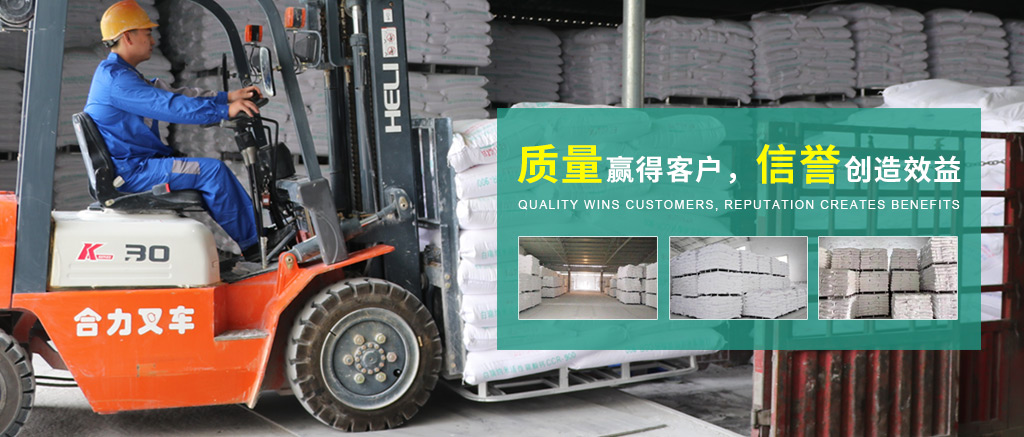Main industrial production technology of nanometer calcium carbonate
Time: 2016-11-30
The particle size of nano-sized superfine calcium carbonate is very small (generally 1 nm ~ 100 nm), and it is difficult to produce nano-sized superfine calcium carbonate by physical method, especially the physical method can not prepare highly active crystal form. Therefore, chemical methods are being studied both at home and abroad, among which carbonization is the main method to produce nano-scale ultrafine calcium carbonate. The main industrial production processes of nano-calcium carbonate are: intermittent bubbling carbonization, continuous spray carbonization, high gravity reaction crystallization and so on.
1.1 Intermittent bubbling carbonization method
Intermittent bubbling carbonization is a process used by most manufacturers at home and abroad. According to whether there is a stirring device in the carbonization tower, the method can be divided into ordinary intermittent bubbling carbonization method and stirring intermittent bubbling carbonization method. The method is to add refined calcium hydroxide suspension and appropriate additives into the cone base cylindrical carbonization tower, and then carbon dioxide is passed through the bottom of the tower for "carbonization" to obtain the required calcium carbonate product. In the reaction process, it is necessary to strictly control the reaction conditions, such as carbonization temperature, carbon dioxide flow, lime milk concentration and stirring speed, and add appropriate additives.
1.2 Continuous spray carbonization method
The continuous spray carbonization method is to spray the lime milk into a fog with the nozzle, and spray down from the top of the tower, and a certain concentration of CO2 rises from the bottom of the tower at a certain speed, and react with the misty lime milk. Generally, three-stage series carbonization process is adopted. The refined lime milk is sprayed into 0.01nm ~ 0.1mm droplets from the top of the first stage carbonization tower, and carbon dioxide enters from the bottom of the tower, and the two countercurrent contact occurs carbonization reaction. The reaction mixture flows out from the bottom of the tower into the slurry tank, and after treatment with appropriate dispersant, the spray enters the second stage carbonization tower to continue carbonizing. Then, after surface active treatment, spray into the three-stage carbonization tower carbonization to obtain the final product with a particle size of 40 ~ 80 nm.
1.3 Hypergravity reaction crystallization method
The characteristic of the high gravity reaction crystallization technique is to strengthen the gas-liquid mass transfer process. The core is that the carbonization reaction is carried out in a super-gravity centrifugal reactor (rotating spiral or packed bed reactor), using tens to hundreds of times the acceleration of gravity generated by the high-speed rotation of the packed bed, a super-heavy field environment can be obtained. By countercurrent contact of CO2 and Ca(OH)2 suspension in special equipment for high gravity, interphase mass transfer and microscopic mixing are greatly enhanced, creating an ideal environment for uniform and rapid nucleation of CaCO3. In the superheavy force field, various transfer processes are greatly strengthened, the phase interface is rapidly updated, and the volume mass transfer coefficient can be increased to 10 ~ 1 000 times that of the normal gravity packed bed, thus greatly improving the dissolution rate of Ca(OH)2 and CO2 absorption rate, increasing the concentration of Ca2+ and CO2-3 in the system, and increasing susaturation. At the same time, appropriate dispersants are added. By controlling crystal growth, nano-sized calcium carbonate with average particle size of 15 ~ 30 nm was obtained.
1.4 Non-freezing preparation process
The main characteristics of the non-freezing nano calcium carbonate preparation process are: (1) Carbonization is carried out at room temperature and pressure, without freezing, low energy consumption and less investment. Taking the new 10,000 tons/year scale of nano-calcium carbonate device as an example, the construction investment (excluding working capital) is about 12 million yuan, and the cost of a ton of products is less than 1,000 yuan. (2) The particle size of the product can be adjusted within the range of 10 ~ 100 nm according to needs by adjusting the additive formulation, with narrow particle size distribution and simple operation. China is rich in calcium carbonate resources. At present, China's annual production of calcium carbonate is second only to the United States, accounting for the second place in the world, and has become a major producer of calcium carbonate, but it is not yet a powerful producer of calcium carbonate. In China's calcium carbonate industry, precipitated calcium carbonate with certain technical added value accounts for only 10% of the product structure, and varieties with high added value such as nanoscale calcium carbonate account for less than 1% of the total output. At the same time, the dispersion of the product is large, the performance stability is poor, and it is far from meeting the market demand, and more than 100,000 tons are still needed to be imported every year. Large scale industrial production of nanometer superfine calcium carbonate has been formed abroad. Our fuel is mainly coal, and abroad, coal is used as fuel, oil and gas are also used.
Nano-calcium carbonate is a new type of lightweight calcium carbonate product developed from the processing of nanotechnology in the 1980s, and the particle size is usually between 20 and 100 nm. Due to the ultra-refinement of calcium carbonate particles, its crystal structure and surface electronic structure change, resulting in quantum size effect, small size effect, surface effect and macroscopic quantum effect that ordinary calcium carbonate does not have, and the particle size is fine and uniform, the distribution is narrow, the specific surface area is large, the surface activity and dispersibility are good, and the surface energy is high. Make it in actual use reflects a lot of ordinary calcium carbonate materials do not have more excellent performance, more widely used. If it can be widely used in injection molding, extrusion, PVC profiles, pipes, automotive coatings, sealants, binder coatings, ink, rubber and other industries, the added value of calcium carbonate products has been greatly improved, and soon attracted the general attention of all countries in the world, and has now become a hot spot for inorganic non-metallic materials research and enterprise competition and investment.







 Home
Home  News
News



